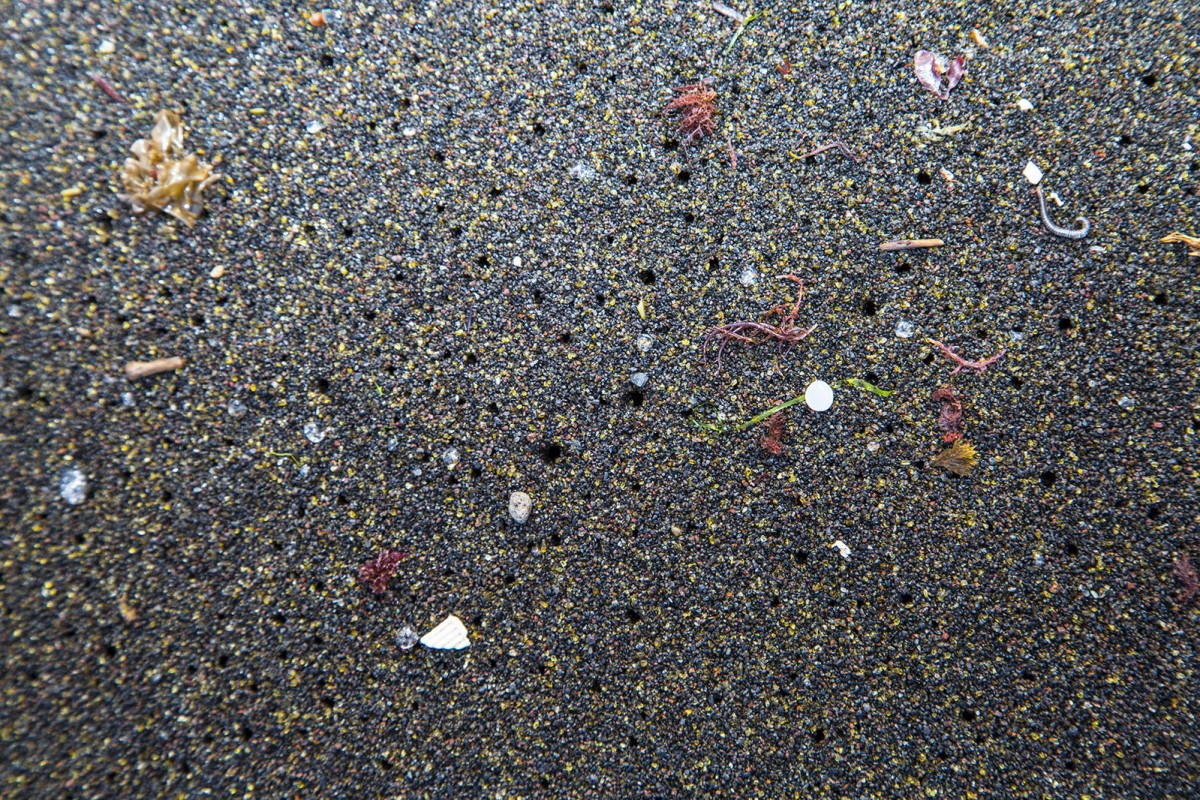Researchers Weather Microplastic to Understand Global Marine Debris Problem

Seabirds with plastic bottle caps and straws in their gut and massive fishing nets drifting like ghosts in remote parts of the ocean are graphic reminders of where plastic trash can end up. Yet according to scientists, tiny plastic particles nearly invisible to the naked eye pose the largest threat to marine life and humans.
Researchers at Scripps Institution of Oceanography at the University of California San Diego are studying these microplastic particles found floating across the world’s ocean to understand how old they are, where they originated, and how they might move up the food chain into humans. The science behind the plastic trash could help with efforts to reduce plastic pollution reaching the ocean.
“One plastic bottle eventually disintegrates into many tiny pieces that can be eaten by anything,” said Scripps PhD student Jennifer Brandon. “The real problem in the ocean is happening at a very small scale.”
Scientists estimate that 90 percent of the marine plastic in the world’s oceans is less than a centimeter in length, and that five trillion pieces of plastic are currently in the ocean, with an estimated 4.8 to 12.7 million metric tons more entering every year.
(See researcher Jenni Brandon describe the microplastic study)
In a recent study supported in part by UC Ship Funds and the National Science Foundation, Brandon and former Scripps PhD student Miriam Goldstein experimentally weathered pre-production plastic pellets used to make a wide range of plastic products. They set up experiments to simulate three real-world weathering conditions: a dry/sunlight sample to replicate shoreline conditions, sunlight/seawater to mimic the ocean surface, and seawater/darkness to imitate plastic sitting on the seafloor to better understand how long ocean plastics have been lost at sea.
The researchers then measured the pellets’ chemical bonds periodically over a three-year period using a laser spectrometer to see how their physical structures were changing over time under the different weathering conditions. Their thought was that varying environmental conditions would affect the pellets differently and therefore could be used as a proxy for how plastics age in the real world.
The chemical makeup of the experimentally weathered plastics was then compared with plastic samples obtained during the 2009 Scripps Environmental Accumulation of Plastic Expedition (SEAPLEX) to the North Pacific Ocean Subtropical Gyre. During SEAPLEX, Goldstein led a group of graduate students aboard the Scripps research vessel New Horizon to the “Great Pacific Garbage Patch” to document human-generated trash floating across thousands of miles of open ocean.
Results from the chemical analysis showed that the plastics collected from the middle of the gyre were considerably older than those obtained from areas closer to the coast. With this data, the researchers were able to confirm that most of the microplastics found in the gyre originated from coastal regions and became permanently trapped in the garbage patch by ocean currents, rather than being dumped there by passing ships.
“This study helps us get a better picture of what is out there,” said Brandon, a coauthor of the study recently published in the journal Marine Pollution Bulletin.
The researchers hope that their micro-scale plastic studies will lead to a better understanding of how these plastics impact the base of the food web, such as larval fish and zooplankton, and also bring more awareness to the bigger marine debris problem—the small stuff.
-- Annie Reisewitz
Photo courtesy of Race for Water - Microplastics Azores



